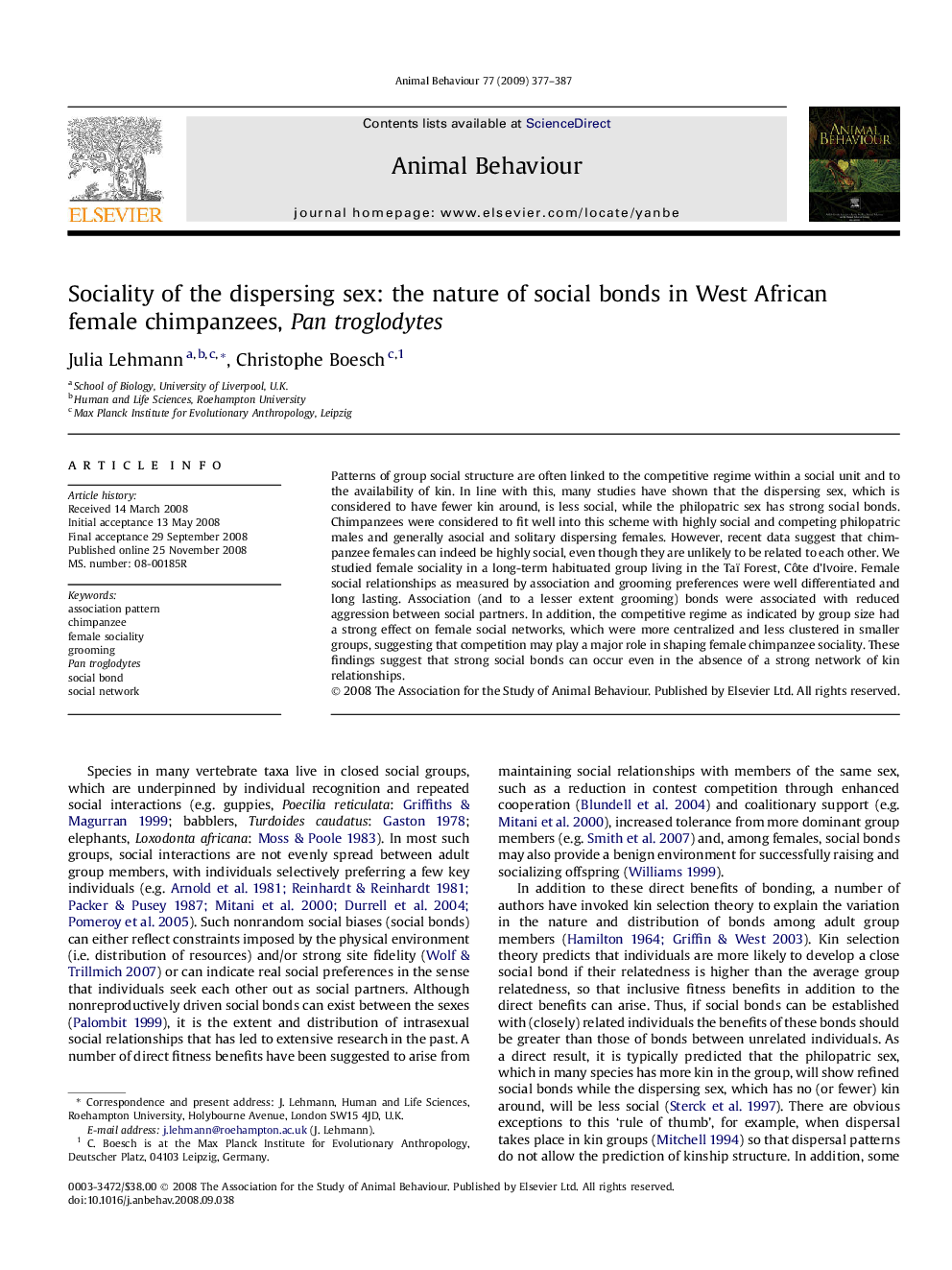| Article ID | Journal | Published Year | Pages | File Type |
|---|---|---|---|---|
| 2418160 | Animal Behaviour | 2009 | 11 Pages |
Patterns of group social structure are often linked to the competitive regime within a social unit and to the availability of kin. In line with this, many studies have shown that the dispersing sex, which is considered to have fewer kin around, is less social, while the philopatric sex has strong social bonds. Chimpanzees were considered to fit well into this scheme with highly social and competing philopatric males and generally asocial and solitary dispersing females. However, recent data suggest that chimpanzee females can indeed be highly social, even though they are unlikely to be related to each other. We studied female sociality in a long-term habituated group living in the Taï Forest, Côte d'Ivoire. Female social relationships as measured by association and grooming preferences were well differentiated and long lasting. Association (and to a lesser extent grooming) bonds were associated with reduced aggression between social partners. In addition, the competitive regime as indicated by group size had a strong effect on female social networks, which were more centralized and less clustered in smaller groups, suggesting that competition may play a major role in shaping female chimpanzee sociality. These findings suggest that strong social bonds can occur even in the absence of a strong network of kin relationships.
